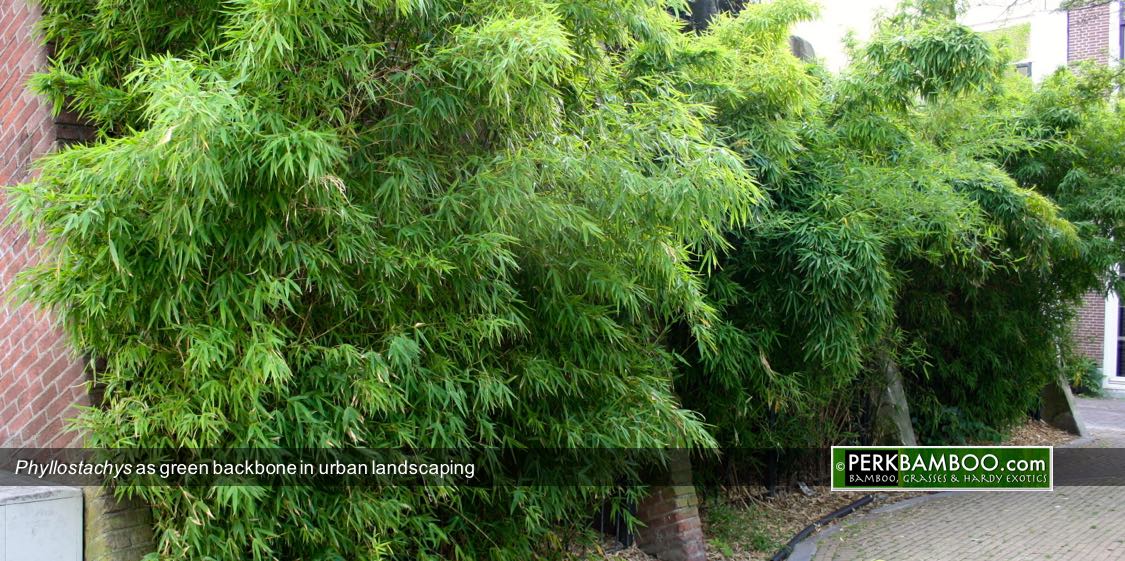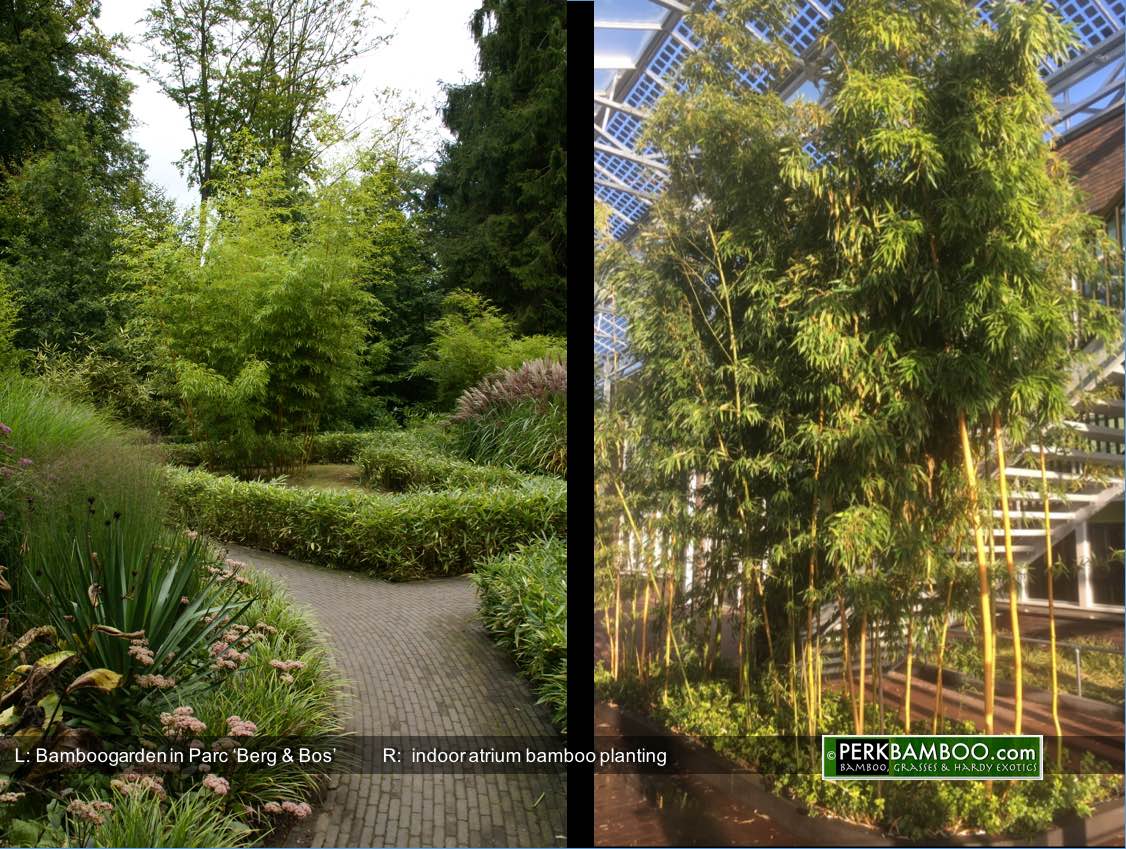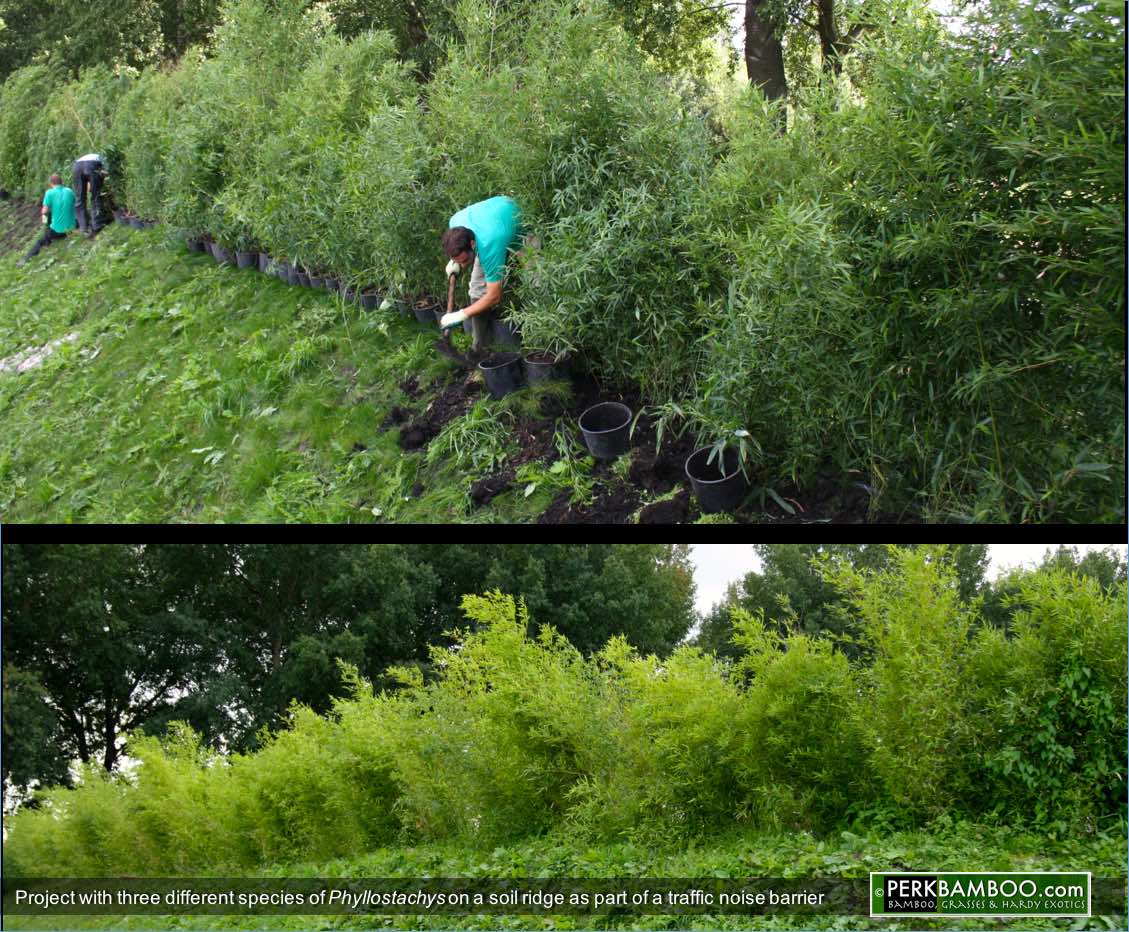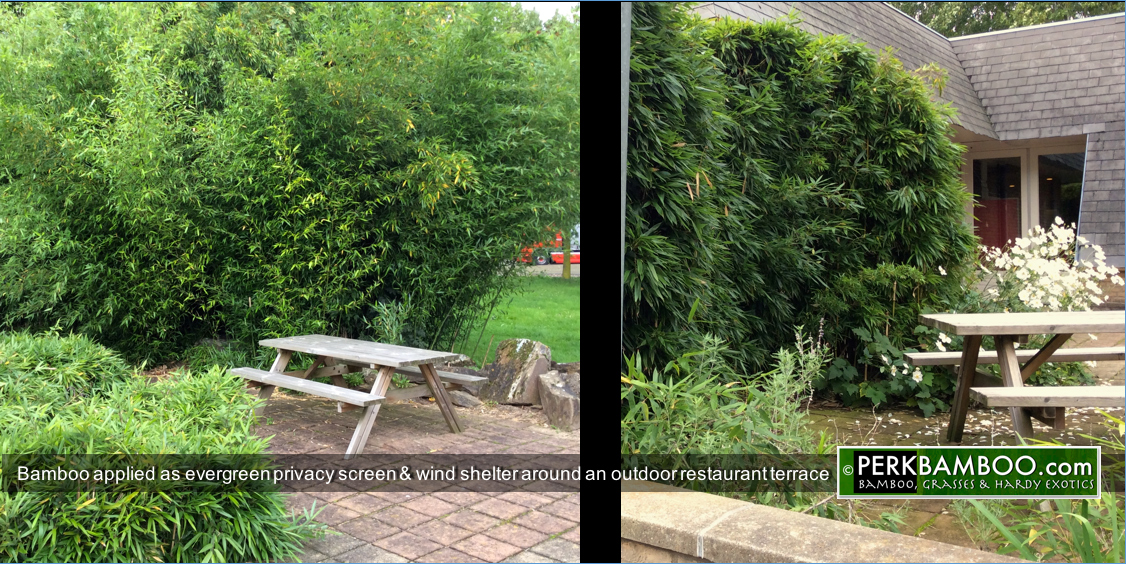BAMBOO IN PUBLIC SPACE

Governments contribute to an environmentally sustainable and attractive living environment through the use of vegetation in public spaces. Due to its special properties bamboo is emerging in urban areas. Bamboo is a very strong plant, making them suitable to use in places where shelter is needed. Moreover bamboo can be controlled extensively and is therefore relatively cheap in management, if invested in well considered design and plant selection. There is an extensive assortment of bamboos available. We can offer good advise which type (s) suit best for your project. Aspects such as salt resistance, height, density and social security may be relevant. Consider the abiotic conditions and the application, but also with the available / required management. Good advice and a right choice will result in the greatest chance of success.

ADDED VALUE OF BAMBOO
Due to the evergreen nature of bamboo, rapid growth, high LAI (Leaf Area Index) and high quality of the culm fibers, bamboo highly recommendable for multifunctional use in (urban) green space because it contributes to air better quality, reducing noise pollution, increases rainwater retention and produces valuable bio-based raw materials to a much greater extend compared to traditional planting. Bamboo can be used as crash absorber in traffic accompanying planting. Some species can even serve as tree replacement. Through their evergreen nature they are also used to eliminate visual nuisance throughout the year. Bamboos are so very attractive as an addition to the usual assortment of public green. For the purpose of landscaping to achieve the right choice and manage an evergreen willow thickets when planting picture with bamboo. Bamboo is a good candidate as a multifunctional vegetation in the urban environment of the future. The optimal operation related to the environmental functions of bamboo with the right scale of planting, dimensioning, structure building, but also species choice, required maintenance and integration in policy and management. It is therefore only sensible to make thoughtful design and organize the implementation expert guidance at the project level. For more information contact us.

ROOT CONTROL
Also, it is of importance to keep the account the rhizome growth of a number of species. With a bamboo rhizome barrier (available at our nursery) bamboo vegetations are easily held in place. In places where rhizomes are not desired and one might want to make no additional efforts for the use of root screens, the non-invasive (clumping) species of the genus Fargesia are the solution for heights between 1,5 - 4 m. Among species with rhizomes we offer both low ground-cover bamboos (10 - 150 cm) as wel as higher upward growing species (4 - 12 m).
AIR QUALITY
Bamboo vegetation with the right structure and composition contributes to the reduction of air pollution (particulate matter, NOx) to the surrounding residential areas. Research has shown that reduction is possible between 5 and 25%. The right leaf structure allows for micro-turbulence of the passing air flow as the fine particles can be captured. The stomata have a voltage difference with respect to the area through which the aerosols are retained on the leaf. During a rain shower the small particles rinse away with the run-off water to the soil. Bamboo has a relatively high number of square meters of leaf surface area per cubic meter plant leaf volume (the so-called Leaf Area Index, LAI). Due to the evergreen nature LAI is also fairly stable throughout the year. The required width, height and build-up structure of the bamboo planting along roads and streets is dependent on the intensity of the line source, and distance between road and habitation. Sometimes most suitable is a combination of species, with a good height build-up and a sufficient structure variation.

ENVIRONMENTAL LANDSCAPING: BIOMASS, CO2, OXYGEN AND SOIL PURIFICATION
Because bamboo is a very fast-growing, evergreen plant it has a bigger CO2 absorption capacity compared to traditional deciduous vegetation. Thus, the biomass production (= the quantity dry matter produced by the plant of rhizomes, roots, culms and leaves) is also much larger. Bamboo is able to produce up to 35% more oxygen compared to trees. On favorable locations in China one has measured up to 12 tonnes of CO2 fixation per hectare per year captured by bamboo. Bamboo vegetations deliver harvestable products in the form of bamboo sticks and nutritious new shoots in spring. But perhaps more important is the harvesting of bamboo fibers from public green plantations for the benefit of many hi-tech applications. The annual biomass increase of bamboo is 10-30% per season, thus a much larger producer of woody raw materials than the annual growth of 2-5% in the case of trees. Fast-growing bamboo is also able to take up soil-pollutants from the upper layer into the plant system. This can provide an inexpensive way to meet a contaminated soil to the legal standard. For the production of bamboo culms for bio-based raw materials the strongest, highly productive species are selected for our climate to establish bamboo plantations. We are actively engaged in consulting, delivery and implementation of projects in this field. Please contact us for more information.

WATER MANAGEMENT
Due to the intensification of rainy periods because of climate change, the (government) policy is to capture and infiltrate rainwater where it falls. Bamboo can play an important role to this aspect. In urban areas 'dry' seasonal gullies or slight depressions can be planted with bamboo to capture runoff water. Bamboo planted on slopes and embankments prevent erosion because the top soil is held in place by the root math. This will maintain the water-proof function of the dike body or hillside slope.
RECREATION
Bamboo fits well into recreational sites in urban areas where the above functions can be combined. In city parks bamboo gives quickly a different atmosphere, more privacy and a back cover with evergreen seating areas and playgrounds. Bamboo groves used as a play around a play area are inviting on natural playing behavior of children.



